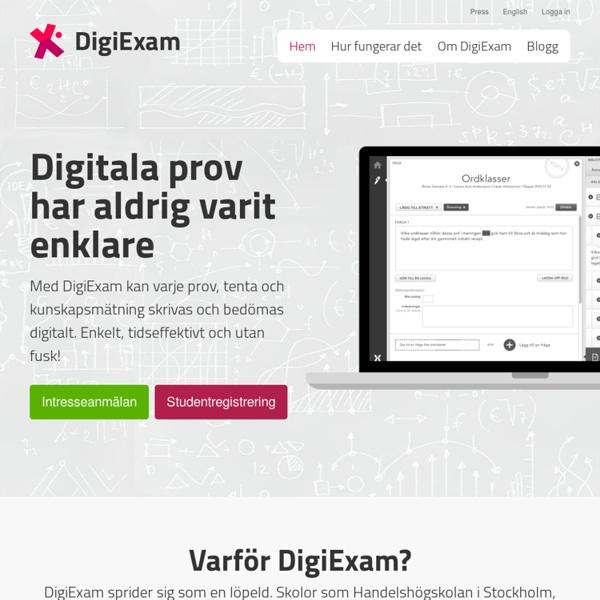



Digitala prov Testmoz - The Test Generator Den knäppa lektionen mellan två arbetsområden Kroppsspråket, avsnitt Ditt kroppsspråk kan förstärka ditt budskap, eller göra det otydligare eller till och med vara förvirrande. Retorikexperten Barbro Fällman ger ståuppkomikern Simon Garshasebi i uppdrag att göra ett framförande där hans kroppsspråk har ett helt annat budskap än det han framför inför sin publik. Madelen träffar Sissela Kyle på Stadsteatern i Stockholm och får en lektion i hur man gör en bra entré. Vi möter också imitatören Göran Gabrielsson som visar hur han handgripligen värmer upp rösten inför ett framträdande. Här kan du skapa egna klipp ur programmet Hjälp Stäng 1. Se en film om hur man skapar klipp. DelaKopiera länken genom att trycka ctrl+C på PC eller cmd+C på Mac. Så kan du använda programmet i din undervisning Lärarhandledning Ladda ner (PDF)
untitled Moçambique | Henning Mankell Efter nästan fem århundraden som portugisisk koloni blev Moçambique självständigt 1975. Den ekonomiska situationen i landet hade påverkats mycket negativt av inbördeskrig och naturkatastrofer såsom svår torka och översvämningar. Dessutom rådde stor brist på utbildad arbetskraft och utländsk valuta. Vid självständigheten 1975 var Moçambique ett av världens fattigaste länder. Omkring år 1500 ockuperade portugiserna Sofala, som är en av Moçambiques provinser, och några år senare hamnstaden Moçambique som är belägen på en ö med samma namn. År 1962 bildades den marxist-leninistiska befrielserörelsen Frelimo. Frelimo övergav formellt marxismen 1989 och året därpå möjliggjorde en ny konstitution flerpartival och fri marknadsekonomi i landet. Huvudstaden i Moçambique är Maputo och den nuvarande presidenten heter Armando Guebuza. Moçambiques folk kan delas in i tre huvudgrupper. Den mellersta delen befolkas av grupper som språkligt tillhör Shonafolken.
Följ t-shirten Följ T-shirten Ämnen: Hkk, Sh, Ge, Ke, Bi, Sl (Sv/SvA, Bl, Tk, Fy, Re) Övningen Följ T-shirten börjar med att följa en T-shirts resa från vagga till grav med diskussioner om energianvändning, klimat- och miljöpåverkan från bomullsplanta till att den blir avfall, alltså T-shirtens livscykel. Målet är att eleverna ska tillägna sig kunskaper om var och hur varor produceras, och kunna ta ställning och värdera val och handlingar som konsument utifrån ett hållbarhetsperspektiv. Material: Flödesschema över T-shirtens väg, Energifallets tidning för högstadiet, filmen Ett miljösmart klädval, Elevinstruktion: Gör en LCA, Kartläggningstabell för LCA, faktablad om avfallstrappan. Material och verktyg till den här övningen finns även i menyn till höger. Genomförande Del 1 Skohögen (ca 15 min) Låt alla elever att lägga en sko i en gemensam hög. Frågor att diskutera: Var är skorna tillverkade? Del 2 Livscykelanalys (LCA) Boktips! Redovisning och dokumentation Fördjupning Fakta > Faktablad: Avfallstrappan